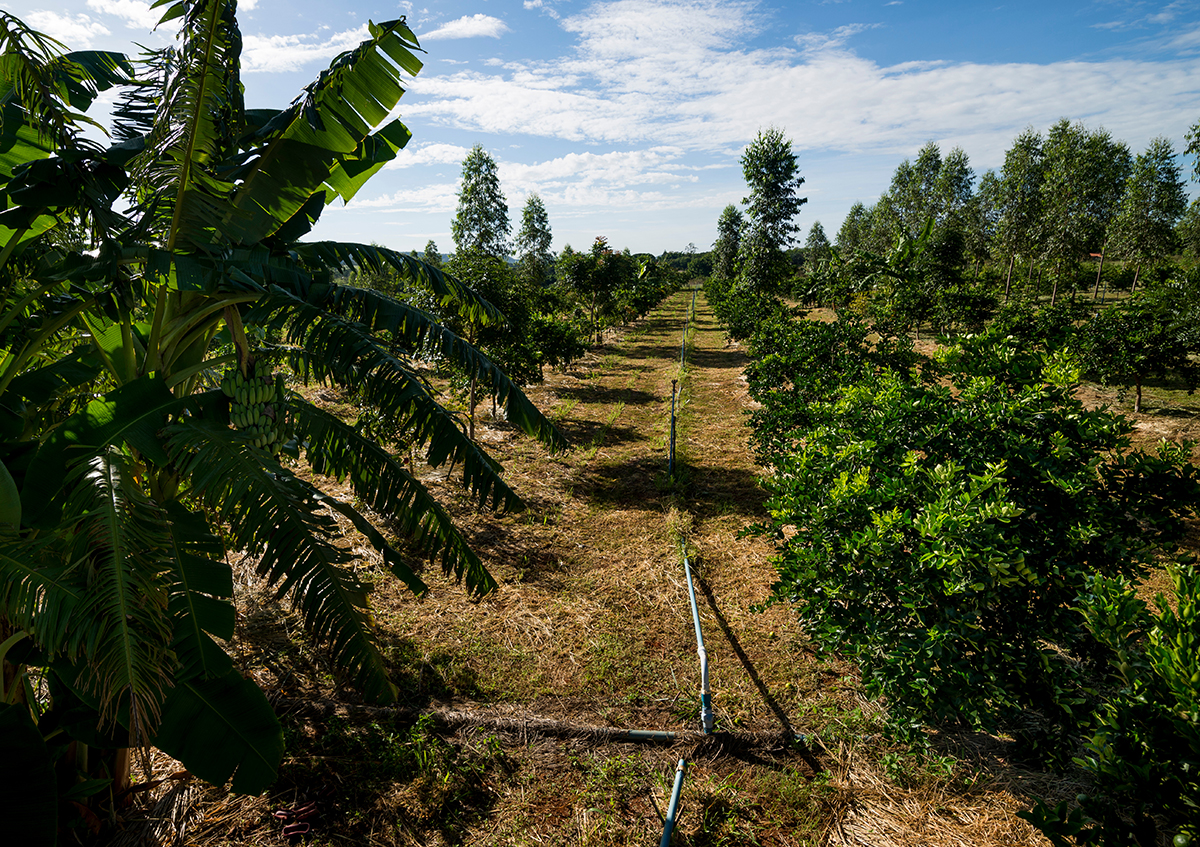
Climate Smart Agriculture (CSA), along with adjacent concepts such as conservation agriculture, has become a recognised concept for guiding the implementation of agricultural practices. CSA is distinguished from related agricultural models through its three pillars: sustainable productivity, adaptation and mitigation. The pillars reflect the need to protect livelihoods, by ensuring an income while enhancing resilience to climate change, and mitigating emissions. However, an important trade-off exists: it is more achievable to complement productivity with adaptation measures, but the inclusion of climate mitigation measures is often more difficult to incentivise. Furthermore, the outcomes of implementing the three pillars are context sensitive. Hence the challenge of translating CSA into practice and policy.
To operationalise the CSA concept and address this challenge, the Syngenta Foundation collaborated with NRI to develop a simple decision-support tool that allows comparison of the CSA performance of different projects in a way that makes such trade-offs more visible. Following a review of existing tools, the researchers developed a conceptual framework which highlights the interconnections of potential interventions and the different pathways to achieving outcomes.
The tool was further refined through a process of co-creation to allow comparison of the performance of CSA projects in terms of the five outcome areas (agricultural production, income and assets, value chains, natural capital and human capital). Users score projects according to the anticipated CSA outcomes from the project interventions.
Given the often-limited availability of data, the tool is intended to be flexible and accept input from CSA practitioners with diverse knowledge bases. Users can reflect on the context and decide on the relevance of the different outcome areas and the trade-offs among them. They respond to contextualising questions where relevant, which contributes to locational specificity and the weighting of the tool parameters.
The tool is intended to support the implementation of CSA projects on the ground, but also to support portfolio managers in design and implementation, particularly the selection of projects at a regional scale. This latter point is crucial to understanding the limitations of the CSA concept itself. Expecting a single project to advance all three CSA pillars is often not feasible and places undue burden on farmers, especially when a project is expected to continue beyond a fixed period of funding. Dr Dominik Klauser who co-developed the tool said: ‘CSA projects are often based on assumptions on what is missing, rather than the context-specific analysis of actual data. The tool allows you to test your assumptions and identify data gaps in decision-making to ensure that interventions are designed to meet the context of a targeted farming system.’
What distinguishes this tool from others is its ability to represent performance across the three CSA pillars and the defined outcome areas, allowing for different types of trade-offs to be presented. The other distinction is the tool’s representation of data/knowledge gaps.
The tool was tested in workshop settings in Dhaka and Nairobi for different CSA projects on various commodities, including high-density mango and alternative wetting rice cultivation in Bangladesh, and sorghum and potato in Kenya. This exercise was conducted with the help of experts from academia, international cooperation, governmental organisations and specific project specialists. Results from these tests reaffirmed the trade-offs between mitigation and other CSA priorities. They also highlighted the importance of the value chain configuration when comparing products that can directly supplement household food demand with those that need processing to maximise income.
Comparing the three-pillar scores of individual projects across a region/portfolio, points towards a more complete understanding of whether meeting CSA’s triple bottom line is a more achievable aspiration at scale. In this approach, the strengths of an individual project can offset the limitations of others. This tool is presented in more detail in a paper, ‘Translating theory into practice: A flexible Decision-making tool to support the design and implementation of Climate-Smart Agriculture projects’, published in the journal Agriculture Systems.
This work was supported by the Syngenta Foundation through the CSRA metrics and operationalization project. The Foundation’s Dr Mara Renn, Dr Dominik Klauser and the dedicated staff in the Dhaka and Nairobi offices made significant contributions to the work.

